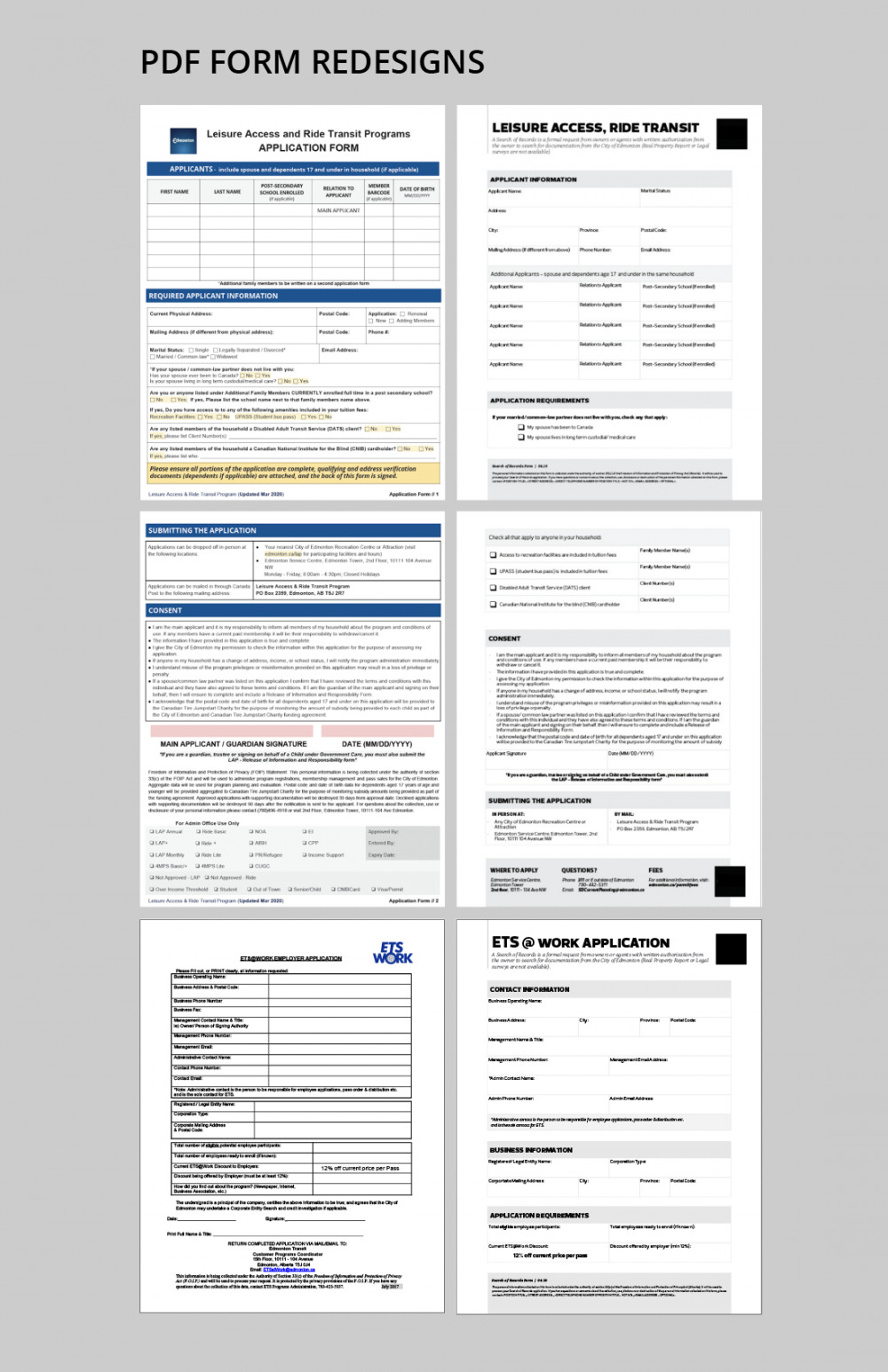I studied user-centered form design to improve municipal forms. Research shows that there is no consistent format, pattern library, or application of brand for PDF forms in most of the departments, and existing forms are problematic. Most form creators lack the time, resources, and knowledge to create well-designed forms. A design toolkit that educates and demonstrates how to create a uniform, consistent, well-designed forms can be used to help government employees improve their forms and citizen experiences.
In the 2020 fall semester, I conducted a literary review, a heuristic analysis, expert interviews, and user testing to identify strengths and weaknesses within municipal service forms. Results showed that the largest percent of issues is with language, form flow, and formatting, and existing forms are inefficient, wasting employee resources and creating challenges for citizens. Based on research results, I make recommendations for a form design toolkit, which I then developed over the winter semester.
I created form design guidelines, translated them into a Google Doc form template for employees to build from, made a checklist to ensure due diligence, redesigned 2 PDF forms, and housed them all on a microsite prototype designed to educate employees to the need and benefits of good form design. These tools are intended to save government employees time and help citizens gain access to the services they need.
The form template and checklist were created in Google Docs to be easily accessible to all employees. The template is a starting point for employees to produce forms for publication or for a designer to complete the design in InDesign. The checklist helps ensure employees have followed the guidelines correctly to enforce efficiency and unity.
Adobe InDesign is ideal for form creation, but very few government employees have access or knowledge of the program. Forms were redesigned in both InDesign and Google Docs to show a comparison of both programs, as well as overall improvements to the redesigns.






